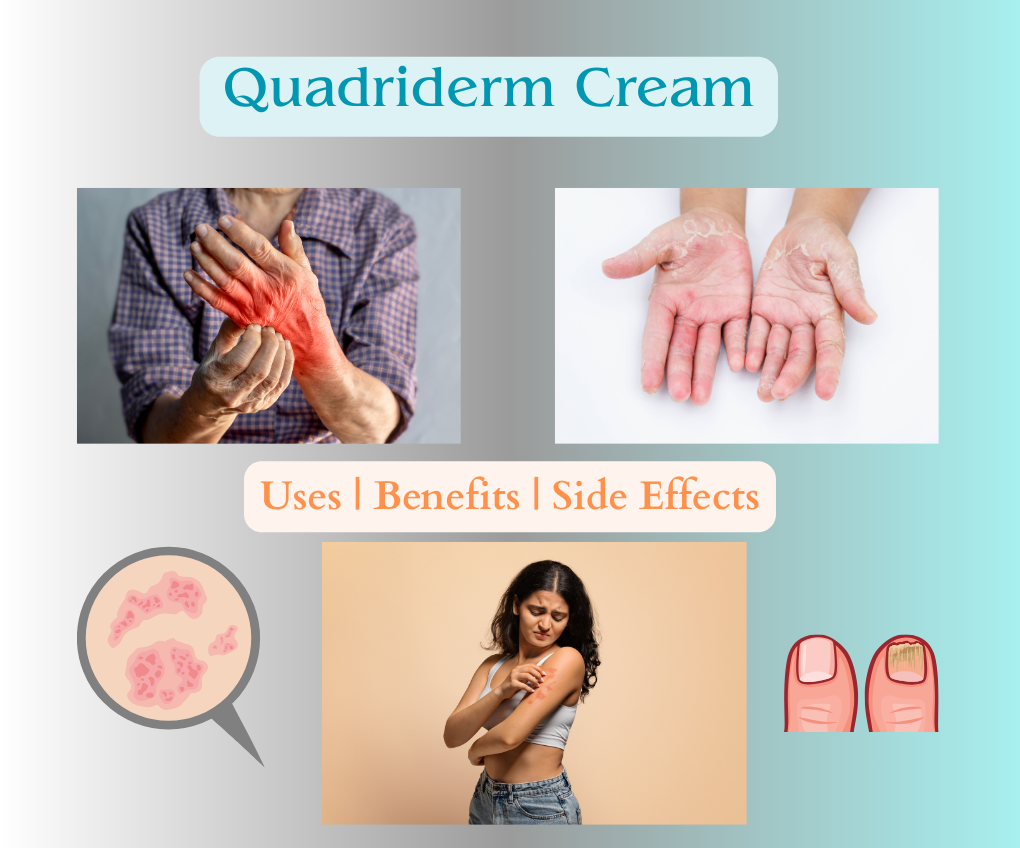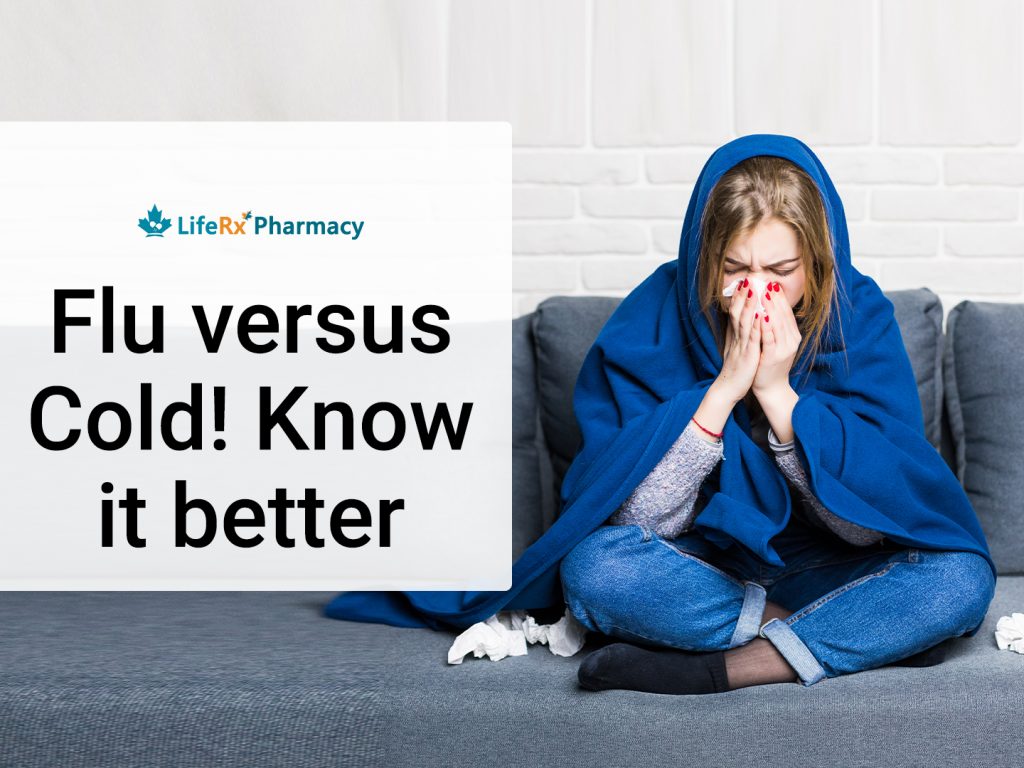When dealing with persistent skin infections or inflammations, it’s important to have a treatment that addresses multiple issues at once. Quadriderm is a multi-functional topical medication that relieves various skin conditions caused by fungi, bacteria, and inflammation.
Whether you’re experiencing itchy rashes, fungal infections, or allergic skin reactions, Quadriderm may be the solution your doctor recommends. In this blog, we will discuss Quadriderm Cream’s uses, its benefits, and the side effects that can occur.
What is Quadriderm Cream?
Quadriderm Cream is a prescription-strength topical medication formulated to address a range of inflammatory and infectious skin conditions. It combines three active ingredients that work together to provide relief from symptoms such as itching, redness, swelling, and infection:
- Beclomethasone dipropionate – A corticosteroid that helps relieve inflammation, itching, and skin redness.
- Clotrimazole – An antifungal medication used to treat infections such as athlete’s foot, ringworm, and candidiasis.
- Neomycin sulfate – An antibiotic that prevents or treats bacterial skin infections.
Because of this combination, Quadriderm is particularly effective for mixed infections, where both fungal and bacterial infections are present along with inflammation.
Key Points:
- Used for: Skin infections, dermatitis, eczema with secondary infection, fungal rashes.
- Application: Applied topically to affected skin, usually 1–2 times daily.
Precaution: Should only be used under medical supervision to avoid potential side effects like skin thinning, resistance, or irritation.
Quadriderm Cream Uses:
Quadriderm is a multi-purpose topical medication commonly prescribed to treat various skin conditions involving inflammation, fungal infections, and bacterial infections. Thanks to its combination of a corticosteroid, antifungal, and antibiotic, it is effective in managing complex skin issues.
Quadriderm Cream uses:
- Fungal Skin Infections
- Ringworm (Tinea corporis)
- Athlete’s foot (Tinea pedis)
- Jock itch (Tinea cruris)
- Candidiasis (yeast infections on the skin)
- Inflammatory Skin Conditions
- Eczema and dermatitis that involve itching, redness, and swelling
- Contact dermatitis due to allergens or irritants
- Seborrheic dermatitis (in some cases, under medical advice)
- Bacterial Superinfection
- When a fungal or inflamed area becomes infected with bacteria, Quadriderm helps control the bacterial growth due to Neomycin.
- Mixed Infections
- Effective for skin problems that involve simultaneous fungal and bacterial infections along with inflammation.
- Psoriasis (select cases)
- Occasionally used under medical supervision when psoriasis is complicated by secondary infection.
Key Benefits of Quadriderm Cream:
Quadriderm offers a range of therapeutic benefits by combining three powerful agents—a corticosteroid, antifungal, and antibiotic—into one formulation. This makes it particularly effective in treating skin conditions that involve both infection and inflammation. Read about the benefits of Quadriderm cream underlined:
1. Relieves Inflammation and Itching
- The beclomethasone dipropionate component is a corticosteroid that reduces redness, swelling, and itching caused by inflammatory skin conditions like eczema, dermatitis, and allergic reactions.
2. Treats Fungal Infections
- Clotrimazole, known to be an antifungal agent, fights fungal infections such as:
- Ringworm (Tinea corporis)
- Athlete’s foot (Tinea pedis)
- Jock itch (Tinea cruris)
- Candidiasis (yeast infections)
3. Prevents and Treats Bacterial Infections
- Neomycin sulfate is a broad-spectrum antibiotic that helps control or prevent secondary bacterial infections, which often occur when skin is broken due to scratching or inflammation.
4. Offers Combination Therapy in One Product
- Instead of using multiple creams, Quadriderm provides a single, convenient treatment for mixed infections involving bacteria, fungi, and inflammation.
5. Quick Symptomatic Relief
- Many users experience rapid relief from symptoms like itching, burning, and redness, which improves comfort and quality of life while the skin heals.
How to Use Quadriderm Cream Safely:
Step-by-Step Guide to Using Cream:
- Clean and Dry the Affected Area
- Gently wash the skin with mild soap and water.
- Pat the area dry completely before applying the cream.
- Apply a Thin Layer
- Dispense a small amount of the cream and gently spread a thin, uniform layer over the affected skin.
- Rub it gently until absorbed.
- Typically used once or twice daily (morning and night) or as directed by your doctor.
- Wash Your Hands After Use
- Unless you’re treating your hands, always wash them after applying the cream to prevent spreading the medication to other areas or people.
- Avoid Sensitive Areas
- Do not apply to eyes, mouth, open wounds, or mucous membranes.
- Avoid use on the face, groin, or underarms unless your doctor specifically recommends it.
- Do Not Cover Unless Advised
- Avoid covering the area with bandages or tight clothing unless told to do so, as this may increase absorption and side effects.
- Use Only for the Prescribed Duration
- Do not use for longer than recommended. Overuse can lead to skin thinning, resistance to antibiotics, or worsening fungal infections.
- Monitor for Side Effects
- Watch for signs of irritation, increased redness, or allergic reaction.
- If symptoms worsen or do not improve after a few days, consult your doctor.
Side Effects of Quadriderm Cream:
Quadriderm for skin infections is helpful, but it does come with side effects. Read below for side effects:
- A sensation of heat or a stinging feeling at the site of application
- Itching or general skin irritation
- Dryness or redness of the skin
- Flaking or peeling of the skin
- Thinning of the skin (atrophy)
- Appearance of stretch marks (striae)
- Breakouts resembling acne
- Slowed healing of cuts or wounds
- Skin lightening or changes in pigmentation (hypopigmentation)
- Onset of secondary bacterial or fungal infections
- Allergic reactions such as rash, swelling, or blistering
Precautions and Warnings:
- Use Only as Prescribed:
Quadriderm should be used strictly according to your healthcare provider’s instructions to avoid misuse and side effects. - Avoid Long-Term Use:
Prolonged application can cause skin thinning, resistance to treatment, and hormonal effects, especially on sensitive skin. - Do Not Use on Broken or Open Skin:
Applying the cream on wounds or raw skin can increase the risk of irritation and systemic absorption. - Avoid Use on Sensitive Areas:
Do not apply to the face, groin, underarms, or around the eyes unless directed by a doctor. - Avoid Occlusive Dressings:
Do not cover the treated area with tight bandages or plastic wraps unless instructed, as this increases absorption and the risk of side effects. - Wash Hands After Application:
Prevent unintentional spread to other body parts or individuals. - Discontinue If No Improvement:
If symptoms do not improve within 7–10 days, consult your doctor for reassessment.
- Not for Preventive Use:
Should not be used to prevent infections—only treat them when diagnosed.
Who Should Avoid Using Quadriderm Cream
- Children under Age 12:
Unless specifically prescribed, due to the higher risk of absorption and hormonal effects. - Pregnant or Breastfeeding Women:
Use only if recommended by a doctor, as corticosteroids and antibiotics can be absorbed through the skin. - People with Known Allergies:
Anyone allergic to Beclomethasone, Clotrimazole, neomycin, or related drugs should not use this cream. - Patients with Viral Skin Infections:
Such as herpes simplex, chickenpox, or shingles, steroids can worsen these conditions. - Tuberculosis or Syphilitic Skin Lesions:
Should not be treated with corticosteroid-containing creams like Quadriderm.
- Individuals with Perioral Dermatitis or Rosacea:
The steroid component can aggravate these skin conditions.
ENDNOTE:
Quadriderm Cream is a powerful combination medication designed to treat a variety of skin conditions involving inflammation, fungal infections, and bacterial contamination. While it offers quick relief and convenience in one formula, its use is under proper medical supervision to avoid unwanted side effects.
Always follow your doctor’s guidance, avoid self-medication, and consult a healthcare provider if symptoms persist or worsen. Used responsibly, it can be a highly effective part of short-term skin treatment.
FAQ
Is Quadriderm Cream suitable for treating acne or pimples?
This is not suitable for treating pimples or acne. The steroid component may temporarily reduce inflammation, but it can worsen acne over time and cause side effects like skin thinning or clogged pores.
Is Quadriderm Cream safe during pregnancy or breastfeeding?
It should only be used during pregnancy or breastfeeding if prescribed by a doctor. Some of its ingredients can be absorbed through the skin, which may not be safe for the baby.
What should I do if irritation or redness worsens after applying Quadriderm Cream?
If your skin becomes more irritated or red or develops a rash after applying Quadriderm, stop using the cream immediately and consult your healthcare provider. It could be a sign of an allergic reaction or worsening of the condition.
Can I use Quadriderm Cream on my face?
The face is a sensitive area and more prone to side effects like skin thinning or acne. You should only use cream on your face if your doctor specifically recommends it and for a very short duration.
What happens if I use too much Quadriderm Cream?
Overuse of cream can lead to serious skin issues such as thinning, stretch marks, or hormonal imbalances, especially in children. Always follow your doctor’s instructions regarding the amount and duration of use.
If symptoms get better quickly, is it safe to stop using Quadriderm Cream right away?
If your symptoms improve quickly, it’s often safe to stop using the cream, but you should consult your doctor first. Stopping too early without proper guidance could lead to the infection returning.
How long should I use Quadriderm Cream?
Most treatments with Quadriderm last 7 to 10 days, but the exact duration depends on your condition. Using it longer than prescribed can increase the risk of side effects.
Is Quadriderm Cream safe for children?
It is generally not recommended for children unless prescribed by a paediatrician. Children are more sensitive to the ingredients, especially the steroid, which can be absorbed more easily through their skin.
For more informative blogs, click here


